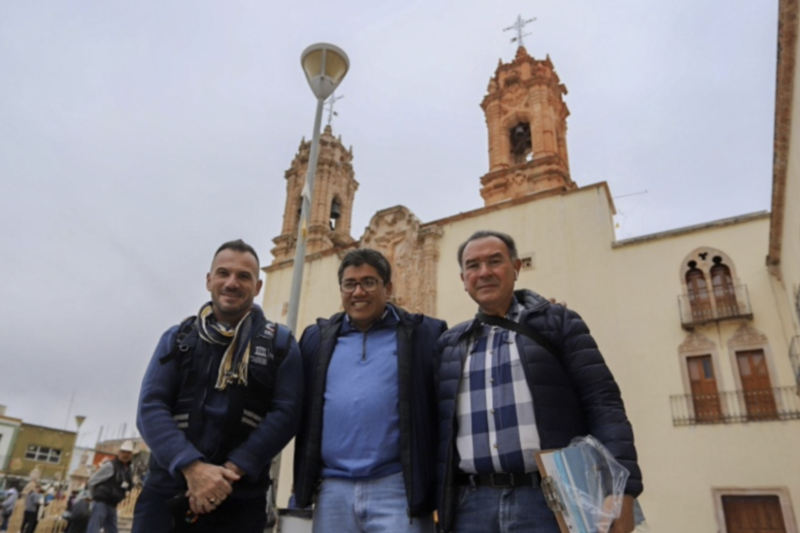Visit to Zacatecas by UNESCO Representative Frédéric Vacheron Oriol to the sites of the Camino Real de Tierra Adentro, the World Heritage Cultural Itinerary, and the La Quemada Archaeological Zone

The UNESCO Representative visited sites along the Camino Real de Tierra Adentro, a World Heritage Cultural Route, and the La Quemada Archaeological Zone, inscribed on the Tentative List, in Zacatecas. As part of his mission to the State of Zacatecas, Mr. Frédéric Vacheron Oriol, UNESCO Representative and Director of the UNESCO Office in Mexico, visited various sites along the Camino Real de Tierra Adentro, a World Heritage Cultural Route, on December 18, 2021. He also visited the La Quemada Archaeological Zone, which is part of the sites on Mexico's Tentative List. In Plateros, located in the Municipality of Fresnillo, historical elements associated with the founding of this mining town intertwine with the religious devotion that made it one of the most popular pilgrimage destinations along this route. As part of the identity and collective memory of many communities along this route, Plateros offers a valuable opportunity to promote sustainable cultural tourism that strengthens heritage protection. Mayor Saúl Monreal Ávila emphasized the importance of promoting Fresnillo's development through its cultural heritage, as this will connect diverse social sectors with points of interest within the municipality.
In addition to touring the Plateros Sanctuary and its pedestrian areas, and gathering valuable information, the group also visited the José González Echeverría Agora, currently undergoing restoration. As part of a comprehensive project, this space can offer valuable opportunities to strengthen World Heritage status and its interaction with other cultural expressions. At the La Quemada Archaeological Zone, the tour of the Site Museum and the main structures of the ancient city highlighted the prominent role this site played during the first millennium CE as a major center of central and western Mesoamerica, maintaining a complex interaction with sites such as Las Ventanas, El Teúl, and Alta Vista, located in the municipalities of Juchipila, El Teúl de González Ortega, and Chalchihuites. Archaeologist Carlos Alberto Padilla Torreblanca, who has been working at this impressive pre-Hispanic settlement for more than two decades, highlighted the processes of linking with the communities and their potential for improving living conditions while also caring for the structures that survive to the present day.
Rogelio González Álvarez, Mayor of Villanueva, explained the potential of La Quemada for the region's culture. He stated that, as part of the Mexican sites inscribed on the Tentative List, it is crucial to safeguard the qualities that fully demonstrate its Outstanding Universal Value, as this will allow for proper planning for the integration of communities into regional development and the evolution toward other forms of protection. Frédéric Vacheron acknowledged the importance of this archaeological zone, its site museum, and the valuable work carried out by the archaeologists. He also expressed interest in a future visit to see the municipal seat and the old hacienda of La Encarnación, where the first hermit in the Americas settled in the 16th century.
To conclude the day, the group visited the Guadalupe Regional Museum, whose original character as a Convent of Propaganda Fide over 300 years ago was crucial in consolidating the Camino Real de Tierra Adentro and the Camino Real de los Texas. Museum curator Evaristo Robles led an engaging tour, outlining the challenges faced over the past two years of navigating the health crisis while maintaining the vibrant program of activities constantly promoted by the Museum Director, Rosa María Franco.
Pedro Jasso, Director of Culture for the Municipality of Guadalupe, on behalf of Mayor Julio César Chávez, expressed interest in promoting the active protection of Cultural Heritage, seeking to strengthen the dialogue between tangible and intangible elements, which are so diverse and complex due to the communities that interact within this space. An invitation was extended for a future visit to the state to promote collaborative initiatives that contribute to sustainable development, community participation, and the protection of heritage in general, and particularly that inscribed on the UNESCO World Heritage List.


























